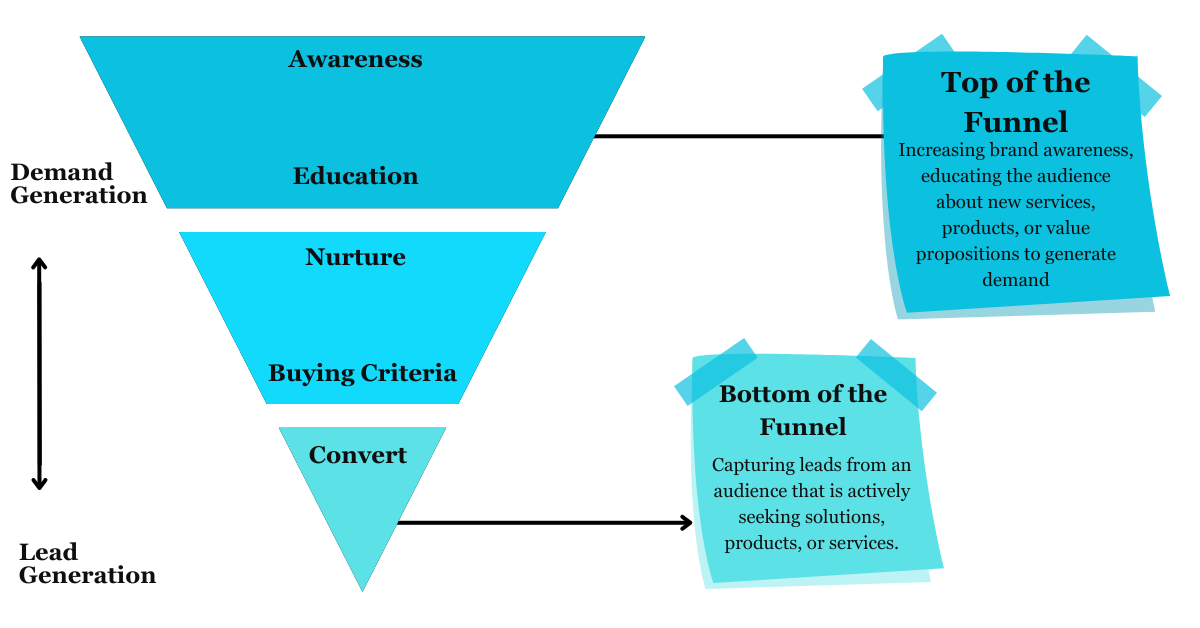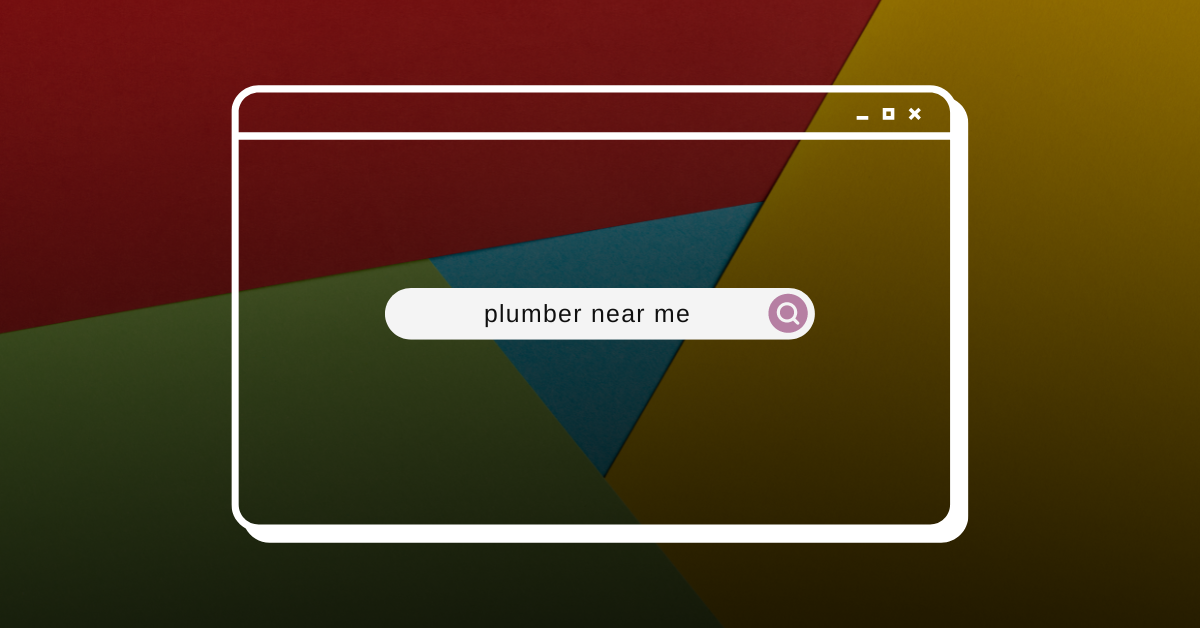
The casual interchange of terms like lead generation and demand generation in business often blurs their distinct roles, confusing their purposes. Whereas bottom-of-funnel tactics focus on generating leads derived form an established demand for a product or service, demand generation focuses on increasing or creating demand for a product or service through awareness, education, and nurturing. A strategic marketing approach may focus on one or the other depending on the business model and go-to-market strategies, but often encompasses a combination of both lead and demand generation tactics. However, understanding the distinction between lead and demand generation is essential for developing a winning inbound marketing strategy and driving business growth. In most cases, businesses earlier in their development should prioritize lead generation, gradually integrating demand generation into their brand’s marketing strategy as their assets and marketing collateral mature. An important note: lead generation may function without the need for demand generation, but there is always a lead generation component involved in strategies that employ demand generation; eventually the leads need to be captured! Properly utilizing both strategies creates a multiplier effect, harnessing the strengths of both approaches for a comprehensive and effective marketing plan.
Looking vs Seeking: Push and Pull Strategies
A key distinction between lead and demand generation lies in “Looking” and “Seeking.” Lead generation involves placement and ensuring that a product, service, or brand is found by an audience that is actively seeking solutions. In contrast, demand generation introduces a product or solution to a problem that the audience may not already know about or properly understand. In essence, demand generation puts the idea in the audience’s head, and lead generation tactics get a business in front of users who are actively seeking their services. This can also be articulated as a push vs pull strategy, not too dissimilar to the traditional pull vs push strategies advertisers have employed for over 100 years. Unlike lead generation, which caters to those actively seeking, demand generation aims to generate curiosity, understanding, and anticipation among potential customers who were not formerly searching for a specific offering. Understanding and strategically combining both approaches is an essential “growth hack” for a comprehensive inbound marketing strategy.

educating an audience through a webinar is an excellent avenue for increasing demand for a product or service

search engine advertising is typically associated with lead generation
Lead Generation: Tapping into Established Needs
Lead generation assumes an established need, a volume of searches, or potential customers actively seeking specific business services. This strategic approach involves utilizing various techniques such as SEO, advertisements, and search marketing to reach users who already express a need for particular products or services. Businesses engaged in lead generation aim to connect with potential customers by strategically deploying links, graphics, and detailed explanations of their offerings through methods like web forms and online purchases. Through these targeted efforts, the goal is to capture the attention and interest of users actively searching for solutions, thereby driving conversions and fostering a direct connection between the business and its potential clientele.
The Search Advertising Connection
Demand Generation: Educating the Audience Early
Real-world Examples
Consider the difference between advertising plumbing services and promoting a tankless water heater as telling two stories. The first relates to lead generation, assuming customers actively seek plumbing services. The second necessitates more effort in demand generation, as it tells a new narrative about a product they might not actively search for, such as new or less essential products/services.
Let’s use our podcast studio, Witcraft, in Columbia, SC, as another example. Here, demand generation is essential, given that potential listeners might not be aware of or actively seeking podcasting services in the area. The studio must then leverage platforms such as LinkedIn, Meta, or TikTok as effective communication channels for storytelling. By actively informing and engaging potential listeners, the studio aims to create awareness regarding their podcasting services’ availability and unique benefits.
The Integration of Lead and Demand Generation
Business Growth through Demand Generation
The difference between demand and lead generation emphasizes their distinctive roles in crafting a marketing strategy. Using a phased approach, businesses should start with targeted lead generation before integrating the broader reach of demand generation. The “Looking” versus “Seeking” paradigm provides a clear lens for understanding the refined strategies for reaching potential customers. In essence, businesses that recognize the unique strengths of both lead and demand generation are positioned to formulate a powerful and influential marketing strategy.
Brittany Degnan
Author

Need Help With Your Digital Marketing?
Related Articles
Side-by-Side CRM Comparisons
When evaluating CRM platforms, it's important to assess the specific needs and goals of your business. Whether you're looking for powerful automation, seamless integrations, or just an easy-to-use interface, selecting the best CRM platform depends on your specific...
Google Ads Success Stories
Google Ads has become an indispensable tool for businesses aiming to expand their online presence and boost sales. These real success stories from various clients in various industries highlight the power of Google Ads in driving tangible results. From startups and...
How Google Measures Search Quality
Google, the leading search engine, handles billions of searches every day. However, many marketers, business owners, and advertisers wonder how Google delivers useful, high-quality search results. The answer lies in Google's various methods, including user surveys,...
Stay Up to Date With The Latest News & Updates
Join Our Newsletter
Stay up to date with the latest news and marketing tips!



Recent Comments